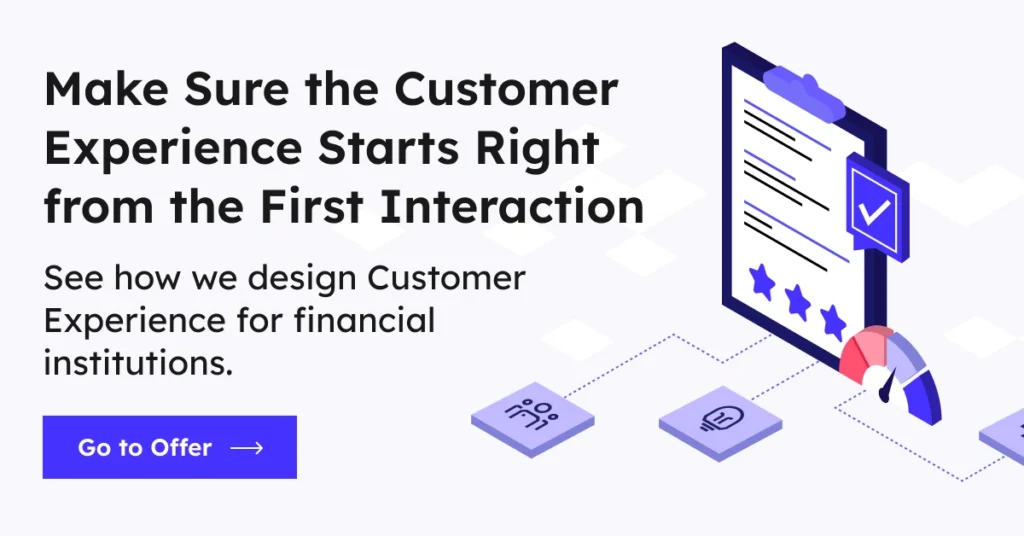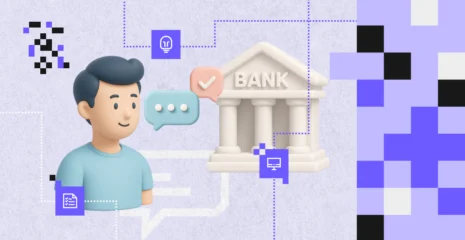Why Do Customers Drop Out Right at the Start? Mobile Onboarding in Banking: The 5 Deadly Sins and How to Avoid Them
As early as 2022, research showed that as many as 63% of customers abandoned the digital account opening process before completing the form¹. Three years later, despite significant investments in biometrics and KYC automation, the situation remains alarming. According to The Financial Brand (2025), more than half of mobile applications end in user abandonment, and every second financial institution admits to experiencing drop-offs in its digital channels². So why do banks, despite advanced technologies and massive investments in digital transformation, still lose customers right at the start? And what are the most common mistakes in mobile onboarding that keep repeating?
What You Should Know:
- Every additional step in the onboarding process increases the risk of losing a customer. More than 50% of users drop out if opening an account takes longer than 3–5 minutes³.
- Technology alone isn’t enough if the process isn’t designed with the customer in mind. Even the most advanced biometric or KYC solutions won’t help if the user doesn’t understand what’s happening and why they should trust the app.
- Onboarding is the first moment of truth in the customer relationship. Every screen, message, and microinteraction determines whether the user will trust the bank’s brand and decide to stay.
Mobile Onboarding in Banking: The First Impression Determines Everything
A customer downloads a bank’s mobile app, encouraged by the promise of “an account in just a few minutes.” Moments later, they realize the process requires filling out several forms, uploading documents, and completing a selfie verification. They feel confused, lose trust, and close the app.
They don’t come back.
It’s a scenario all too familiar in the industry. An onboarding experience that was meant to be fast and intuitive often ends up feeling like a bureaucratic procedure rather than an invitation to start a relationship. According to a Fenergo study (2024), as many as 67% of banks admit to losing customers due to inefficient onboarding and KYC processes⁴.
Onboarding Is Not Just a Process — It’s the First Brand Experience
At Altkom Software, working with financial institutions across Poland, Europe, and the GCC region, we’ve observed that a well-designed onboarding process can increase conversion rates by up to 40%. The key lies in effectively combining simplicity, trust, emotion, and user experience with security and regulatory compliance requirements.

Before the customer fills out the first form, they have to decide that it’s worth starting the process. And this is exactly where many banks lose potential customers—before they even explore the app further. The lack of an option to see how the product works or to test its initial features means the user feels no motivation to continue. Yet they should feel invited, because at first, they are our guest before they become our customer.
Let’s take a closer look at the five most common mistakes—the deadly sins—that cause banks to lose customers right from the start.
1. The First Sin: No Demo Version of the App (Without Providing Personal Data)
The Problem:
Many banks require full registration before a user can even see a single screen of the app. For some, this is an insurmountable barrier—it’s hard to trust a product you can’t try first.
Typical example: The app asks for a Social Security number, ID, or personal details before showing even a glimpse of the interface or a basic dashboard.
Consequences:
- Loss of users before the actual onboarding even begins
- Lower number of mobile app installs and activations
- Missed opportunity to showcase the product’s value before the registration decision
How Do Market Leaders Do It?
Modern banks and fintechs offer a demo or exploration mode that allows users to get familiar with the app’s interface and core features without providing any personal data. The customer sees a realistic screen layout, sample balance, and example user flows. This helps them quickly understand the product’s value and build trust.
In our recommendations, we often introduce this element as a “soft start.” It gives users a sense of safety while giving the bank an opportunity to present its value proposition before any formal steps begin. The result: higher conversion, a stronger first impression, and a lower risk of abandonment.
A lack of a demo version means a lack of invitation to a relationship. And without an invitation, it’s hard to build trust and loyalty.
2. The Second Sin: An Overly Formal and Complex Process
The Problem:
Onboarding processes in many banks still resemble bureaucratic procedures: long forms, multiple confirmations, consents, and verifications. A customer who expected a simple start runs straight into a wall of formalities.
Typical example: The app requires full personal data, a Social Security number, and an ID scan right on the first screen—before showing how the product actually works.
Consequences:
- High abandonment rate within the first few minutes of the process
- Frustration and loss of trust (“it was supposed to be simple, but it feels like dealing with a government office”)
- Higher acquisition costs—the bank pays for traffic that doesn’t convert
How Do Market Leaders Do It?
The best apps use a lean onboarding model—keeping the number of initial steps to a minimum, with the rest of the data completed later. The customer first creates a basic account (for example, by providing only a phone number or email address), and full verification takes place only after the first login.
This approach significantly lowers the entry barrier, allowing users to experience the product’s value faster. The bank gains more activated accounts and fewer abandoned processes.
In Altkom Software projects, shortening the activation flow through a lean onboarding model has delivered conversion increases of up to 40%.
3. The Third Sin: Lack of Transparency and Loss of Control
The Problem:
The customer doesn’t know how long the process will take, what steps lie ahead, or why the bank is asking for certain data. Messages are too technical or written in legal language.
Typical example: The app requests access to the camera or location without explaining why. The user feels monitored rather than informed.
Consequences:
- A sense of confusion and insecurity
- Declining trust in the brand and growing concerns about data use
- Process abandonment and migration to a competitor
How Do Market Leaders Do It?
Leaders communicate transparently and empathetically. Every stage of the process is clearly marked with a progress bar and a simple, understandable goal (“Step 2 of 5 – confirm your details to secure your account”). Short pieces of microcopy explain the reason behind each action (“This helps us protect your funds”).
When designing such solutions, we focus on a language of trust and clarity of communication. This way, the customer gains a sense of control, while the bank achieves higher engagement and positive emotions right from the start of the relationship.

4. The Fourth Sin: Emotionless UX
The Problem:
In many banks, the onboarding process focuses solely on functionality, ignoring the user’s emotions. Messages are cold, and the interface lacks the brand’s tone of voice. As a result, the entire experience feels more like a technical manual than an invitation to a relationship.
Typical example: The welcome screen says, “Log in or create an account,” without highlighting any benefits or providing context. There are no elements that create a positive first impression.
Consequences:
- No emotional connection with the brand
- Low motivation to complete the process
- Difficulty building loyalty from the very first interaction
How Do Market Leaders Do It?
Top banks and fintechs combine UX with emotion. They use friendly messaging, highlight benefits, and introduce microinteractions that make the process feel human. Subtle animations, messages like “You’re almost there” or personalized greetings (“Hi, Anna! You’re just moments away from opening your account”) make onboarding more engaging and approachable.
In projects co-created by Altkom Software, we often collaborate with brand teams to ensure the communication tone and visual identity align with the in-app experience. This way, the registration process not only works seamlessly but also builds trust and emotional engagement from the very first screen.
5. The Fifth Sin: Poor User Experience and Technical Errors
The Problem:
Buttons that are too small, validation errors, the inability to resume the process after losing connection, or unclear error messages—these are everyday issues in many banking apps. Users lose their data, have to start over, and the app appears unstable.
Typical example: After losing internet connection, the login or ID verification process restarts from the beginning.
Consequences:
- Frustration and app abandonment
- Negative reviews in app stores
- Decline in the bank’s technological credibility
How Do Market Leaders Do It?
Leaders apply the resilient onboarding principle, designing processes that are resistant to errors and technical interruptions. Data validation happens in real time, and progress is saved automatically.
In the projects we deliver, we also add so-called recovery points (resume later, retry, contextual help). These features allow users to return to the interrupted stage without losing data or repeating verification steps.
As a result, the customer feels stability and security, while the bank reduces call center requests and improves both NPS and conversion metrics.
Summary: Onboarding as the Most Important Moment in CX
The first three minutes in an app can determine the beginning of a relationship that lasts for years. A well-designed process not only boosts conversion but also builds trust and positive emotions toward the bank’s brand. In our projects for financial institutions, we combine UX, CX, and compliance perspectives to make every stage simple, secure, and user-friendly—from the first screen tap to full account activation.
Mobile onboarding is not a formality but the first moment of truth in the customer relationship. Every screen, message, and microinteraction influences the customer’s decision to trust the bank and stay with it. At Altkom Software, we help financial institutions design processes that bring together simplicity, security, and emotion.
Because onboarding shouldn’t be a barrier—it should be an invitation to a relationship.
